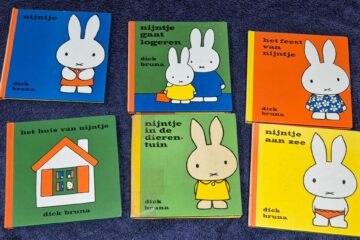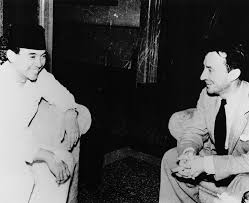After the surrender of Japan there were some 100,000 European people in the Japanese camps, many of them were close to starvation.
An agreement between Australia and Netherlands East Indies governments led to the formation of the Netherlands Indies Welfare Organisation for Evacuees (NIWOE). The organisation emerged out of the experience of 60 Dutch who were evacuated to Brisbane in March 1945 from Japanese interment camps after General MacArthur had freed the Philippines. The Netherlands East Indies Government in Exile in collaboration with the Australian Red Cross, organised their stay. When it became apparent that many more civil internees and POWs from the Netherlands East Indies would need rehabilitation in foreign friendly lands, these organisations and ex-internees decided to set up a welcome committee.
A massive rescue action was launched from Archerfield Airport and other airports in Australia to drop off food and medicines at the camps. Because of the extreme unrest between Indonesians and Europeans , the Japanese were order to guard the camps until Allied troops were able to take over the command.
In the meantime it was decided to evacuees those people that required more direct medical attention. The Australian Government offered to bring evacuees to Australia for a 6 month recuperation period. Initial it was thought that as many as 50,000 individuals needed such assistance in the end however it was around 9,000 people. They were looked after in the various medical and recuperation centres around the country.
Couples received £65 per month plus £15 per child. This was exceptionally generous on the part of the Dutch administration, as 1946 archival records indicate that a man employed by Fairbridge Farm School in Perth, as a cook for incoming Dutch evacuees was paid £3 5s. per week. It is hardly surprising that many evacuees felt that they had gone from Hell in the camps to Heaven in Australia.
The following files contain documents regarding the arrangements between the Australian and Netherlands Governments regarding the evacuation from people who had been interned in the Japanese camps. They were allowed to recoup in Australia. The request from Australia was to limit those as much as possible to ‘white’ people and tension occurred in relation to ‘brown’ Dutch people under the White Australian Policy. The registration of these people also led to some administrative tensions. The research was conducted by Ruby Todorovski, researcher at the University of Queensland.
The first file contains initial documents about evacuees from NEI and the likely hood of more coming to Australia as the Allies frees more parts of NEI. Estimate of 2-3 thousand Netherlands and NEI evacuees from liberated territories are predicted to need accommodation in Australia.
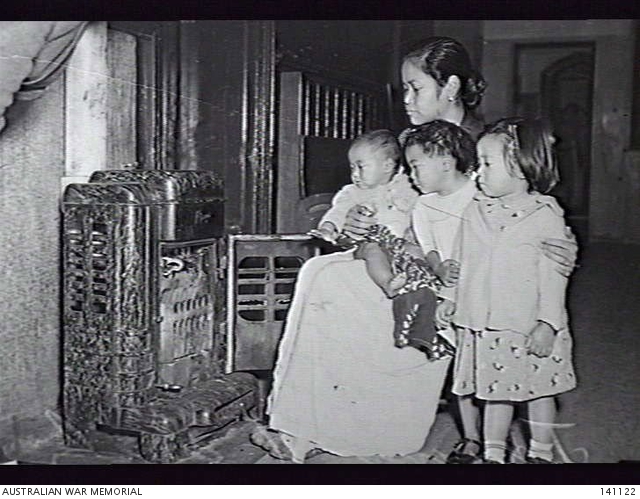
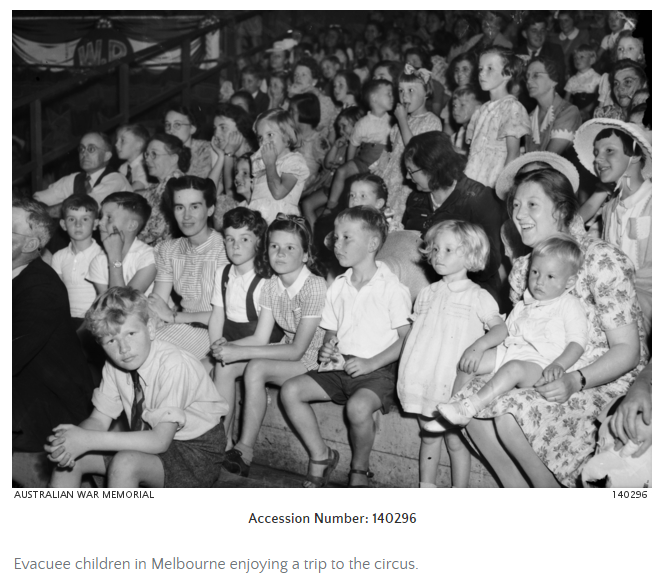
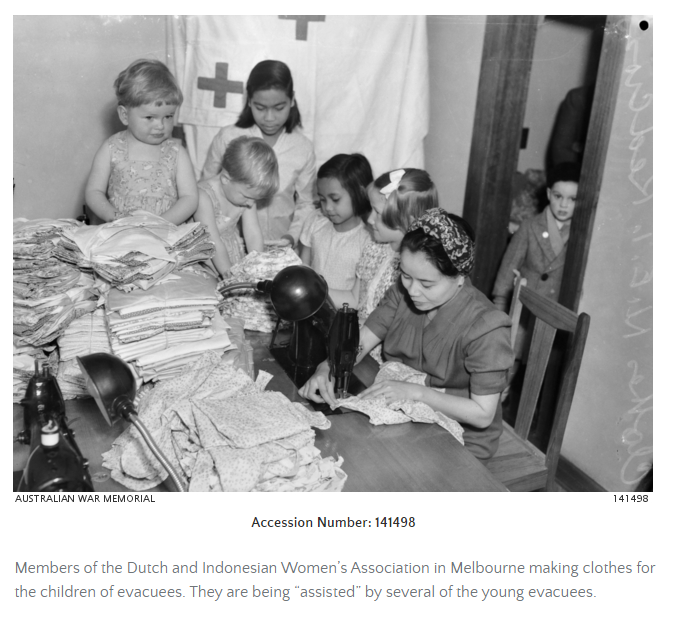
Presentation National Museum
Archive of more than 200 Government documents
From the Peter Dunn collection
There will be some duplication in the various file sets below.
List of refugees and other correspondence regarding evacuees arriving in Australia
Correspondence regarding evacuees arriving in Australia
Accommodation Documentation
More correspondence regarding accommodation
From the collection from Dr. Nonja Peters
Letter stating that it has been agreed that people from the NEI can come to Australia for up to 6 months to recuperate
Many news clippings regarding NEI evacuees coming to Australia after the surrender of Japan and extreme unrest between Indonesians and Europeans came about – many regarding the need for accommodation, and the hoped 50,000 individuals who would recuperate in Australia.
Newspaper clippings about Australia taking in Dutch (or white) internees.
In regards to international Aliens entering from NEI without the appropriate documentation. This is a letter from the Director General of External Security to the Secretary of the Department of External Affairs in Canberra.
Copies of registration forms from NEI evacuees who landed in Port Adelaide aboard the M.S. “Kota Gede” on 24/11/45
From Tyranny to Freedom – Dutch children from NEI to Fairbridge Farm School WA 1945-1946
The subject of evacuees, especially in relation to Western Australia, is also discussed in this book from Dr Nonja Peters
This item below from The West Australian shows a photograph of members of the Netherlands Indies Welfare Organisation for Evacuees and mentions the ‘imminent repatriation’ of Dutch evacuees from Perth. Some of these evacuees were children, who had spent some months at Fairbridge Farm School Pinjarra.
See also:
Dirk, Kitty and Arnold Drok: Internment, resilience and survival
Captain Adrianus Cornelis Marinus (Hoffie) Hofman
Koningsberger-Dozy, M (Netherlands East Indies Evacuees Welfare Organisation)
Links to declassified WWII Australian Documents re the Netherlands East Indies
Specific documents related to evacuees in Camp Columbia
Correspondence written by a former Dutch welfare officer detailing the establishment of the evacuees rest camp in Coolangatta. the camp was used by Dutch residents of the NIWOE as a means of recovering from their experiences of internment under the Japanese, 1942-1945 (Australian War Memorial)
